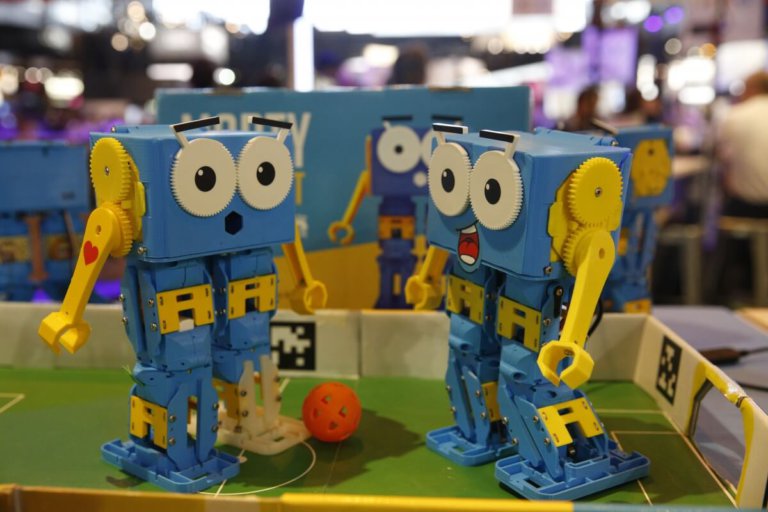
Marty the Robot will soon be joining schools to encourage children to pursue STEM subjects, after the edtech startup behind it, Robotical, has raised £43,291 (US$56,265.31) through a Kickstarter campaign.
With these funds, production can now be ramped up on these robots. According to Digit, a news resource for Scotland’s IT and digital professionals, the Edinburgh-based firm had set an original target of £30,000 (US$38,991) for the campaign, which was surpassed after over 200 backers pledged financial support.
The robot has already won awards such as the Scottish EDGE Award 2016, Royal Academy of Engineering Enterprise Fellowship and the Converge Challenge Design and Creativity award.
Robotical was founded by Sandy Enoch in 2016 after he received his PhD in Robotics from the University of Edinburgh.
What does Marty the Robot do?
Designed to encourage children to pursue STEM careers, the robot helps teachers make lessons more fun and engagin – sparking their creativity and getting them to view scientific concepts in innovative ways.
The robot can be used from primary school to university-level. The original version, Marty, was tested in schools in more than 50 countries and saw enormous success.
According to the company’s website, “Marty is a fully programmable, Wi-Fi-enabled walking robot for kids, makers, educators and for anybody who just wants a cute robot.”
The updated version includes new features such as “nine individually controllable motors and built-in sensors including bump, tilt, acceleration and force.”
According to Digit, these smart sensors enable Marty to copy a user’s movements, and the motors allow it to walk, turn, dance, and even kick a ball.
Jonathan Baxter, Deputy Head at The Flora Stevenson Primary School, said, “Having something physical to move, away from a computer screen, helps pupils better understand what happens when they input certain commands.
“It moves the lessons from theoretical to practical and pupils can see the interaction between software and hardware. Marty is cute and engaging which makes it easy to introduce him in the classroom. But he also demonstrates how coding can be applied in the real world as he can interact with his surroundings.”
We are glad the kids enjoyed learning about robotics with Marty! Our education expert @tanyahowden had a great time organising the workshop and we @RoboticalLtd were pleased to be able to support @bighearts!#learntocode #football #robot https://t.co/kzUjt1qXRN
— Robotical (@RoboticalLtd) July 15, 2019
Marty the Robot helps teach computational thinking – the basis of coding – through inventive and active learning.
An example of this is an exercise done in James Gillespie’s Primary School in the west of Edinburgh, as reported by Scottish magazine Holyrood.
In this exercise, two girls are asked to get their robots to walk across a desk, meet in the middle and shake hands. Headteacher Colin McLean supervised.
McLean then asks students how many steps they think the robots are apart. When one student guesses 22, he asks them to go on and try 22 steps.
McLean told Holyrood, “We’re trying to get them to make guesstimates and test them out, then revisit them. It’s kind of the beginnings of what we might call glitching and looping and coding.”
The introduction of Marty the Robot is a reflection of the growing popularity of robots in the classroom, and how they help make learning more fun.
While these exercises can be done without robots, McLean said that having robots carry out instructions makes the theory more vivid and engaging for children.
“Some of the stuff we do is off technology. It’s using our bodies or paper. The ‘computational thinking’ thing doesn’t have to be about technology.
“You know, typically at this age kids will concentrate for about 15 minutes – but you can see with the robot, they could probably go all morning because it’s such an engaging thing to do.”
Liked this? Then you’ll love…
4 European edtech start-ups to look out for in 2020
4 UK-based EdTech start-ups that are transforming the way we learn







